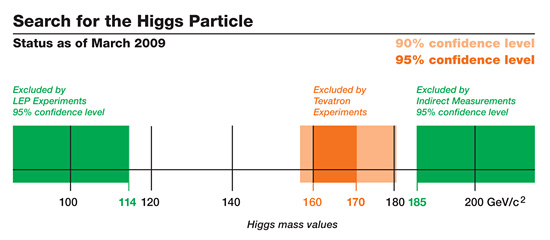|
Click on links below images for medium and high-resolution jpeg images. When using this material please credit Fermilab.
Return to Press Release
Scientists from the CDF and DZero collaborations at DOE's Fermilab have combined Tevatron data from their two experiments to increase the sensitivity for their search for the Higgs boson. While no Higgs boson has been found yet, the results announced today exclude a mass for the Higgs between 160 and 170 GeV/c² with 95 percent probability. A larger area is excluded at the 90 percent probability level. Earlier experiments at the Large Electron-Positron Collider at CERN excluded a Higgs boson with a mass of less than 114 GeV/c² at 95 percent probability. Calculations of quantum effects involving the Higgs boson require its mass to be less than 185 GeV/c². The results show that CDF and DZero are sensitive to potential Higgs signals. The Fermilab experimenters will test more and more of the available mass range for the Higgs as their experiments record more collision data and as they continue to refine their experimental analyses.
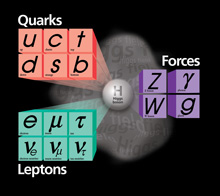
|
According to the Standard Model of particles and forces, the Higgs mechanism gives mass to elementary particles such as electrons and quarks. Its discovery would answer one of the big questions in physics: What is the origin of mass?
|
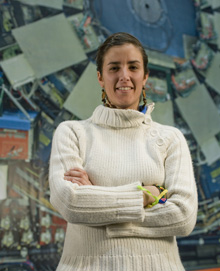
|
Listen to CDF graduate student Barbara Alvarez-Gonzalez, University of Oviedo, as she explains in this 2-minute video the search for the Higgs particle with the CDF detector. Alvarez-Gonzalez is one of about 600 physicists from 63 institutions in 15 countries who work on the CDF experiment at Fermilab.
Video:
|

|
Listen to DZero physicist Michael Kirby, Northwestern University, as he explains in this 2-minute video how DZero collects and analyses collision data to find signs of the Higgs particle. Kirby is one of about 550 physicists from 90 institutions in 18 countries who work on the DZero experiment at Fermilab.
Video:
|

|
The Fermilab accelerator complex accelerates protons and antiprotons close to the speed of light. The Tevatron produces about ten million proton-antiproton collisions per second, maximizing the chance for discovery. Two experiments, CDF and DZero, search for new subatomic particles and forces unveiled by the collisions.
|
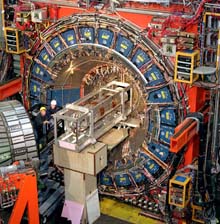
|
The CDF detector, about the size of a 3-story house, weighs about 6,000 tons. Its subsystems record the "debris" emerging from each high-energy proton-antiproton collision produced by the Tevatron. The detector records the path, energy and charge of the particles emerging from the collisions. This information can be used to look for particles emerging from the decay of a short-lived Higgs particle.
|
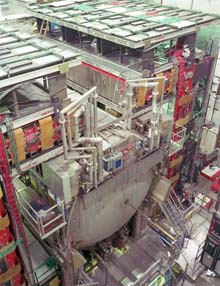
|
The DZero detector records particles emerging from high-energy proton-antiproton collisions produced by the Tevatron. Tracing the particles back to the center of the collision, scientists understand the subatomic processes that take place at the core of proton-antiproton collisions. Scientists search for the tiny fraction of collisions that might have produced a Higgs boson.
|
For additional photos and B roll video footage, including video clips of the Tevatron collider experiments and aerials of the Fermilab site, visit the Fermilab Visual Media Services website. To obtain permission for the use of this additional material, please send an email to vismedsr@fnal.gov.
Return to Press Release
|



